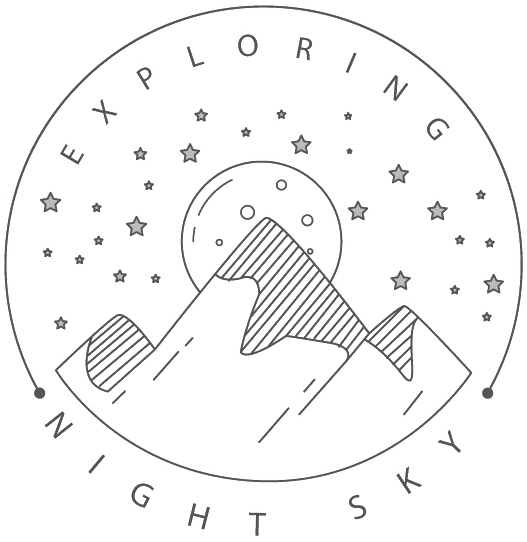December 2014 has been a lucky month for all astrophotographers, as the comet C/2014 Q2 (Lovejoy) brightens up and makes a visit in the night sky. I recently purchased a new AT65ED Scope and an iOptron ZEQ25 so that I could spend my holiday in India capturing all the Northern Objects, but unfortunately had to leave them at airport due to baggage restrictions.
I was disappointed when I saw all the amazing images from all over the world of the comet. I really wanted to take a shot of the same, as it would be my first ever comet capture. I looked up at my gear and realized i don’t really need fancy gear to capture the comet, i can try with the gear i have.
So, finally on 29th December 2014, I headed out to the terrace of my apartment in Nagpur City and set up my gear. Pointed out my camera towards South at around 12:30 AM. At start it was really disappointed as i did not see anything apart from the stars i saw everyday. I was using Canon 50mm f/1.8 on Canon 6D and Tamron 70 – 300 on my Nikon D5100. It was probably because of the lens i could not see anything on my camera LCD, but later i realized that being at a light polluted place, the comet might just be hidden in the image somewhere, I quickly grabbed my MAC and imported the images and scanned for the comet, to my surprise the comet was a really faint smudge.
This is all i needed to pull out the image of the comet with some stacking. Below is how i captured and processed the image.
1) Shooting Location
I live in Nagpur which is a heavily light polluted city and to top that, our apartment is very close to weekly market and hence there is a big flood light around the corner. I was shooting from the terrace of our apartments and if I do not extend the legs of my tripod the terrace walls act as a shield from the light which helps a bit. Here are images of the location where i was shooting from.

Light Polluted Shooting Location

Light Polluted Shooting Location using Astronomik CLS Filter

Light Polluted Shooting Location looking towards Nagpur City

Light Polluted Shooting Location using Astronomik CLS Filter looking towards Nagpur City
2) Camera and Settings
I used two different cameras to shoot the same object (Comet)
i) 1 for a wide field, so that i can determine the location of the comet and center the same in the frame. I used my Canon 6D with 50mm f/f1.8 lens and Astronomik CLS Filter. I used to filter to fight against the light pollution. The filter also enhanced the color and contrast of the comet on my Camera’s LCD screen, which made it easy for me to spot the comet and center it in the frame. The settings i used to take the shots are: 6sec, ISO 6400, f2.8. Below is a screenshot of the settings i used, SOOC (Straight Out Of Camera) image of the comet and a cropped and colour corrected image of the same.

Canon 6D Settings for shooting the comet C/2014 Q2 (Lovejoy)

Comet C/2014 Q2 (Lovejoy) Straight Out Of Camera

Comet C/2014 Q2 (Lovejoy) cropped and colour corrected
ii) Once, I knew the location of the comet and the same was centered in the frame i took few shots with 50mm and then replace my Canon with Nikon with the Tamron 70 – 300mm lens. The conditions that night were pretty good and there were hardly and clouds around, so if looked through the viewfinder i could easily see the comet as a fuzzy object. I was not tracking so the max exposure that i could take was 2sec, i thought i would not get much out of single frames but was pretty amazed to what i got. The settings that i used to take the shots are 2sec, ISO 6400, f5.6 Below is a screenshot of the settings that i used, SOOC (Straight Out Of Camera) image of the comet. I did not have a CLS filter for Nikon so had to work with all the light pollution around.
Correction for the image below, the f4 should be f5.6, this image was taken later and forgot to put the lens at 300mm, will update the image soon.

Nikon D5100 Settings for shooting the comet C/2014 Q2 (Lovejoy)

Comet C/2014 Q2 (Lovejoy) Straight Out Of Camera
3) Processing
Before processing this image, I tried to capture the comet and failed to stack and process the image. Instead i manually stacked the images in photoshop by dragging the images and centering the image with the comet in the center and using the median stack image to bring out the details. The problem with this method was, when i stacked the images, because of the rotation of stars, the stars around the comet started trailing, so had to crop the images tightly, but the image did not have much detail.
I tried stacking in DSS but failed to do so, as the software could not detect the comet using the comet stacking method. I went on to web and looked for tutorials to stack the comet. Luckily, few days ago, a friend of mine Abhijit Juvekar tried to stack and process the image of comet and failed at start. He looked up on web and finally found a really good tutorial that helped him and the same did for me. Here is his post on the Facebook Group Indian Amateur Astrophotographer and here is the video that helped me.
Given below are the steps that i took to process the image. ( Followed the video above )
1) Open DSS and Select all light and dark frames. Once loaded select the first image from the list below. You will see a dark screen as shown below, but the image is too dark to see any stars or comet. At this point you cannot use the comet edit function to center the comet.

DSS 1 – Select all light and dark frames
2) Notice the slider on top right of the image / DSS, this is a contrast slider that will help you see the faint comet and stars. Once, you see the stars and comet you can use the comet edit function to center the comet and continue stacking. Sometimes, you might find that the software does not detect the comet even if it is visible in that case you can use the “SHIFT” button and then manually click the comet to center the comet. Once done, the software will register all the frames and stack them.

DSS 2 – Change the contrast slider to show stars and faint comet
3) I usually crop the area required or is of interest. I found that if i am stacking the whole image and 2x Drizzle or 3x drizzle is checked in stacking parameters, the computer runs out of memory. This is why i always crop the image.

DSS 3 – Crop the area required
4) Software showing the manually selected comet center. Once, everything is ok, click on stack checked pictures and wait until processing is done.

DSS 4 – Software showing the comet that was manually selected
5) Once processing is done, the software will show the cropped image with RGB aligned ( if selected in stacking parameter ), here you can change the RGB alignment , Luminance Graph and Saturation. I changed the saturation to 15% to get the green/blue colour of the comet. Once, all the settings are updated as per required, you can click on save picture to file on left sidebar and then import it in Photoshop and apply more enhancements.

I imported the image to photoshop and applied some simple levels and curves adjustment to bring out the faint details in tail and also applied some noise reduction. Below is a final image after all the processing is done. The image is a composite of the processed image and a black and white inverse image showing the faint details in the tail.

Comet C/2014 Q2 (Lovejoy) Shot from Nagpur on December 2014 and BW inverse image to show the faint comet tail.
This is my very first attempt of capturing and processing a comet. The above image is a total of 69 Lights + 30 Darks = 2.18 Minutes. For more images, please visit my facebook page Amit Kamble Astrophotography



